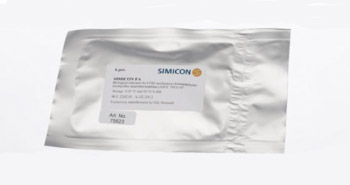
Biological indicator – Dry heat Sterilisation (Oven)
Sterilisation with dry heat (dry sterilisation) takes place in an oven, in which the air must be able to circulate. It is the direct temperature effect, i.e. the irreversible denaturation of cell components, which destroys microorganisms present.
Product description
SSI Diagnostica’s biological indicators are microorganisms (spores of Bacillus subtilis, DSM 13019), prepared on a heat-stable carrier material consisting of filter paper and packed in heat-stable paper as primary packaging.
The dry heat indicators fulfil the specifications in EN ISO 11138-4, i.e. an initial microbial count of 10⁶ CFU/unit, a D-value at 160°C of at least 2.5 minutes and a Z-value of at least 20°C.
Secure your process
By using biological indicators you protect your staff and patients from bacterial infections transferred from non-sterilised utensils
Get certified
We are PreSafe and ISO 13485 certified stated on your certificates for passed test to document your accreditation.
High quality
Our indicators are of high quality. We are following the guidelines from NIR to secure the highest standard of your sterilisation process.
High service
We strive to make it as easy for you as possible. You will always have indicators in your inventory, free re-test and help to troubleshoot if needed.

How to use
A typical sterilisation process using dry heat takes place at a high temperature, e.g. a minimum of 160°C for two hours. Non-heat-sensitive items, e.g. glass, various examination instruments or heat-stable materials, can be sterilised using dry heat.
Dry heat sterilisation require reaching and maintaining of high temperature and an even distribution in the oven and materials over time to reach the sterilisation. SSI Diagnostica recommends the use of biological indicators for regular routine testing and validation/revalidation of dry heat sterilisation. The aim of regular routine testing is to ensure that the temperature is maintained for a sufficient duration in the sterilisation load.
For non-validated equipment, SSI Diagnostica recommends routine testing every month, and for validated equipment evert 3rd month.
Product range
The dry heat indicators are supplied in packs of 3 and 6 for small and large sterilisers respectively.
| Article number | Product |
|---|---|
| 75619 | 6-unit pack without culturing, 106 CFU per unit |
| 75618 | 3-unit pack without culturing, 106 CFU per unit |
| 98406 | Culturing of 3 units |
| 98407 | Culturing of 6 units |
In addition, we offer a subscription scheme for monthly or quarterly testing with a 3-pack or 6-pack. All subscriptions include two deliveries every six months.
This scheme is aimed at small clinics (dentists, medical specialists, etc.) requiring regular testing.
Downloads
Please find the available downloads here.
Simpler for the better
If you work within the field of microbiology, you might be familiar with Occam’s Razor. At SSI Diagnostica, we champion a slightly adapted version of this principle:
The simplest solution is usually the best one.
Contact
Please, reach out if you have questions, comments or requests.






